Dahlia diseases – expert tips to mitigate many potential risks to your blooms
Learn the signs to look out for and how you can keep your dahlias healthy to guarantee a stunning display of blooms each year
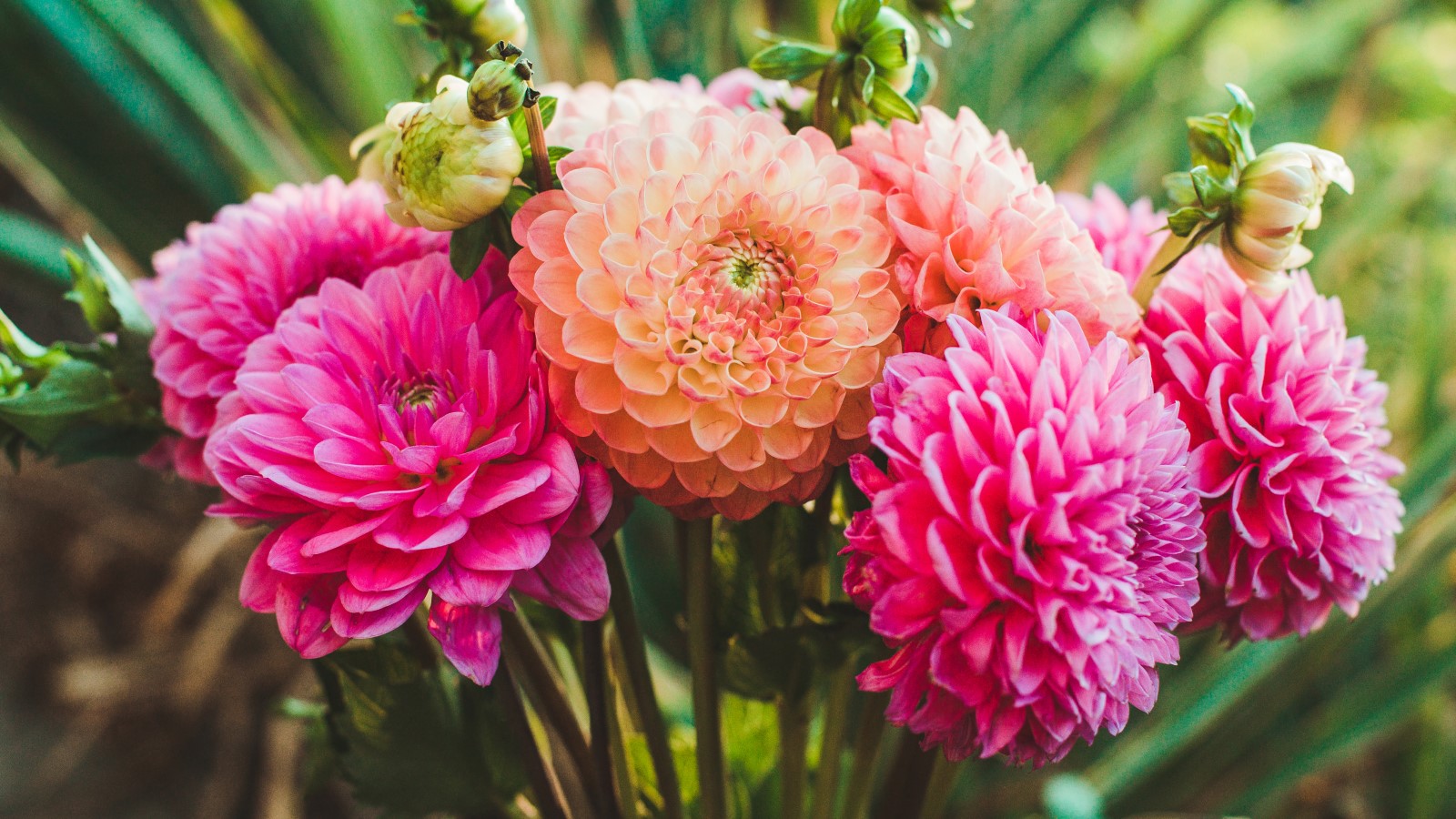

Dahlias come in a wealth of shapes, sizes, and colors, they are hugely-popular plants that provide a real pop of drama to any backyard bed or border. They are also susceptible to many fungal problems, viruses, and bacterial diseases.
When you plan how to grow dahlias you want to know that you are giving your plants the best chance against potential dahlia diseases. Simple things like correct spacing and proper watering can all make a difference and help dahlias to thrive.
Unfortunately there is no treatment for some dahlia diseases and it can be the end of the road for the plants. This is where it is important to stack the odds in your favor by making the right decisions and not falling foul of all-too-common errors that can increase the likelihood of diseases hitting your dahlias.
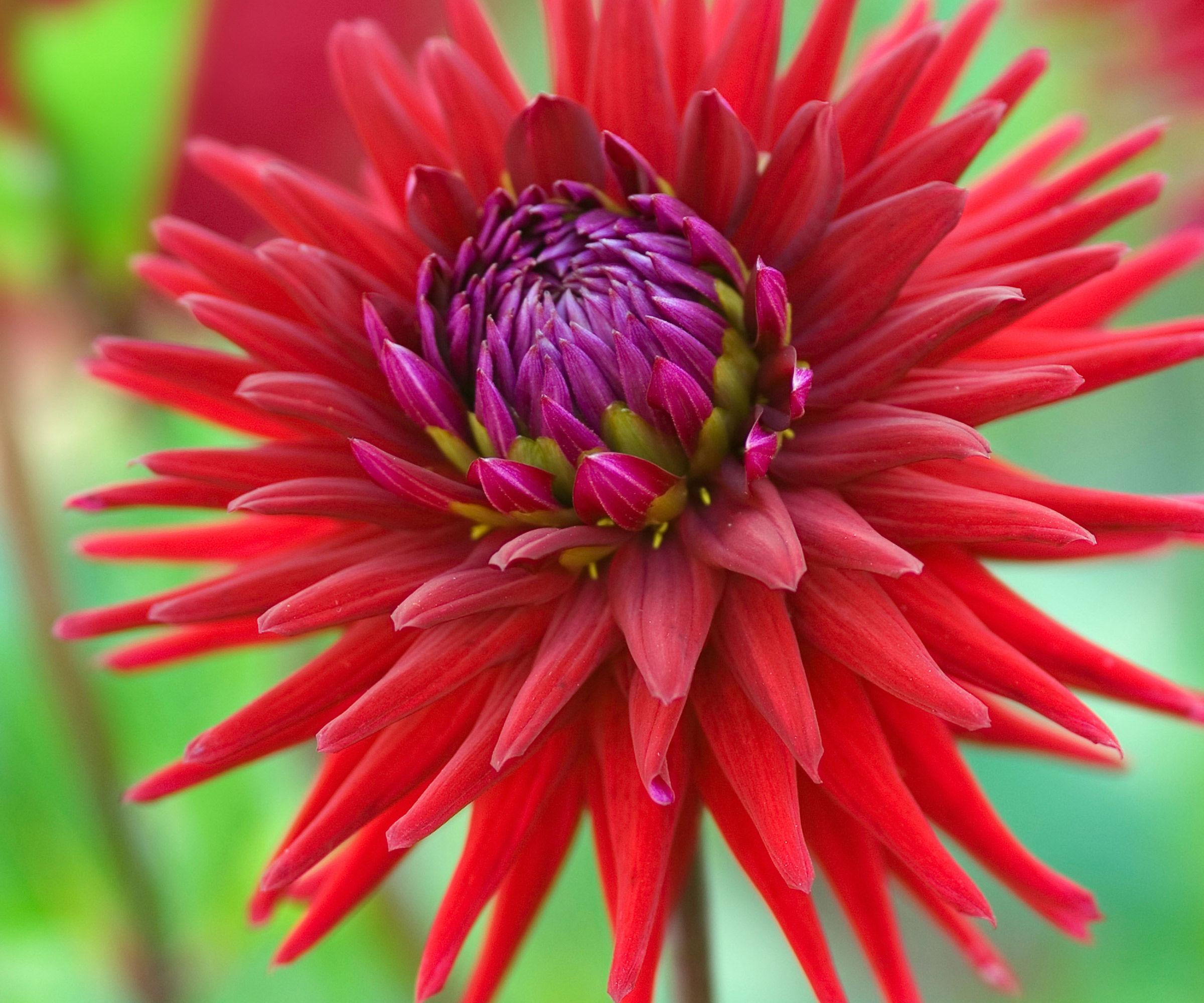
Cactus dahlias have distinctive blooms with thin petals
How to prevent diseases in dahlias
Many dahlia diseases can be combated by maintaining good plant health and using proper cultural practices. This good practice can start from right when you plant dahlia tubers as part of any backyard ideas, through all the essential maintenance tasks such as watering, feeding, and deadheading dahlias.
Amelia Haslehurt, a seasoned horticulturist and creator of Locally Grown Gardens, has cared for a large number of dahlias and highlights some key points that dahlia growers should consider to help mitigate the chances of any potential diseases affecting plants.
She recommends: ‘To reduce the risk of dahlia diseases, ensure proper spacing between plants, water in the morning so leaves dry out during the day, and practise regular crop rotation.
‘Always remove and destroy diseased plant material, and keep the garden clean and free from debris to reduce the chance of disease starting.’
Observation is an important element too, as regular inspections of dahlias can mean spotting any problems quicker. This allows for prompt action that can help prevent the spread of dahlia diseases and also reduce the severity of any infections.

Amelia Haslehurt is passionate about home-grown food, gardening, and living off of the land, so created the Locally Grown site to share her healthy recipes and tips. She has cultivated and cared for numerous dahlias and has first-hand experience in identifying and managing the diseases they encounter.
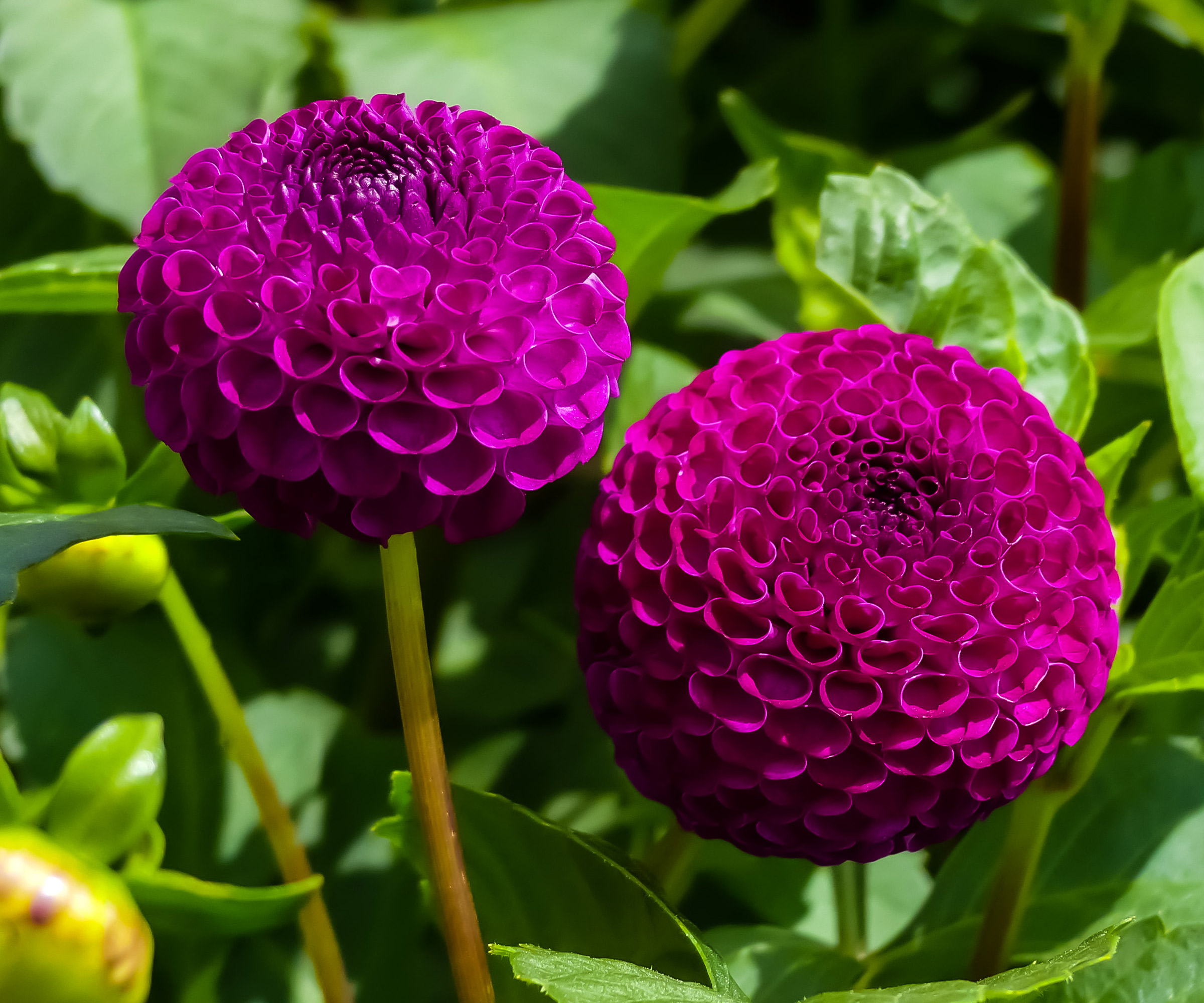
Dahlias are hardy to US hardiness zone 8 and will need lifting for winter in colder climates
Common dahlia diseases
When you are looking to buy any types of dahlias, always ensure to get certified virus-free dahlia tubers from reputable nurseries or suppliers, and do your research as there are varieties of dahlias that are resistant against certain diseases.
You can reliably shop the range of dahlia tubers at Nature Hills
We take a look at some of the most common dahlia diseases to reveal the signs to look out for and what can be done to deal with the problems.
1. Gall
Crown gall is a bacterial disease of dahlias and it causes swellings, the aforementioned galls, on the stems and roots. They can first appear as small swellings that break up on stems, but the galls will turn hard and permanent on the tubers. One problem with crown galls is that the presence can often be unnoticed until you lift the tubers to overwinter the dahlias.
Crown gall, and also leaf gall which is another bacterial disease that hits dahlias and causes abnormal clustered shoots to grow, gets into the plants through wounds. These can be natural, or can be man-made when planting or pruning. It is important to use clean and sterile tools when cutting dahlias to prevent the spread of infection.
Unfortunately, there is no effective treatment for either crown gall or leaf gall and any infected plants need to be removed and destroyed. Never use infected plant material to make compost.
John Negus, plant expert for Homes & Gardens, advises that best practice if your dahlias have contracted gall is to ‘bin or burn the diseased dahlias, and set new ones where you have not grown them before’.

John has been a garden journalist for over 50 years and regularly answers readers' questions in Amateur Gardening magazine. He has also written four books and has delivered many talks over the years on horticulture.
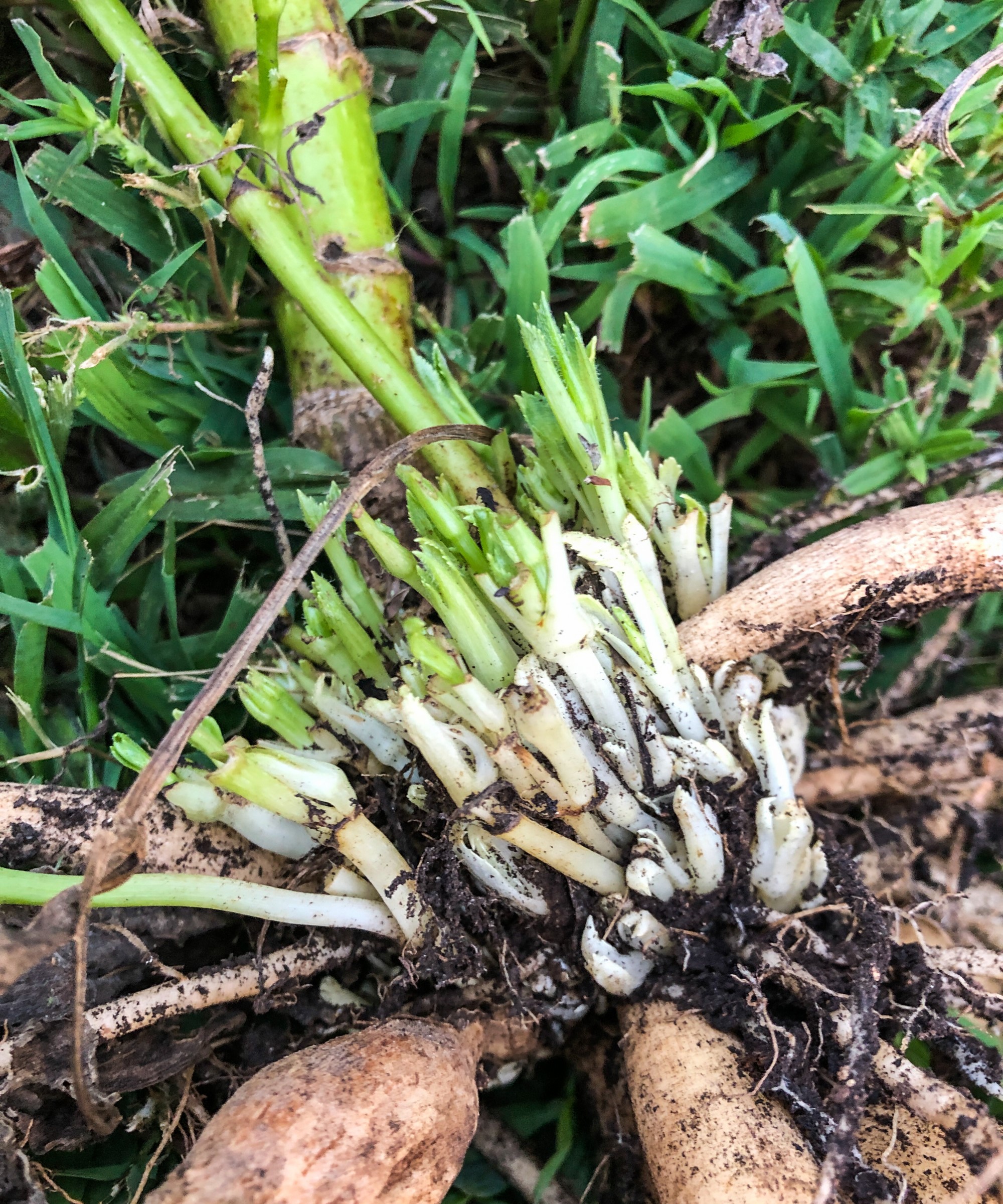
Leaf gall causes clusters of shoots to sprout from the base
2. Mosaic virus
The American Dahlia Society claims that over a dozen viruses are known to infect dahlias and the mosaic virus itself is ‘highly prevalent’. The signs include distorted, mottled, or streaky foliage, small flowers, and stunted growth. Yellow streaks in the foliage are caused by chlorophyll loss, while the distortions will include rolled or cupped leaves.
The virus can be spread from an infected dahlia to other plants, often by aphids but also by humans when they use dirty tools. Sanitized garden tools can help prevent the spread and you can use the likes of soapy water, diatomaceous earth, or companion planting to help get rid of aphids.
Always use food-grade diatomaceous earth, which is available from Amazon.
No dahlias are available that are resistant to mosaic virus and once a plant is infected it cannot be cured. Remove and destroy affected plants and never propagate from infected tubers.
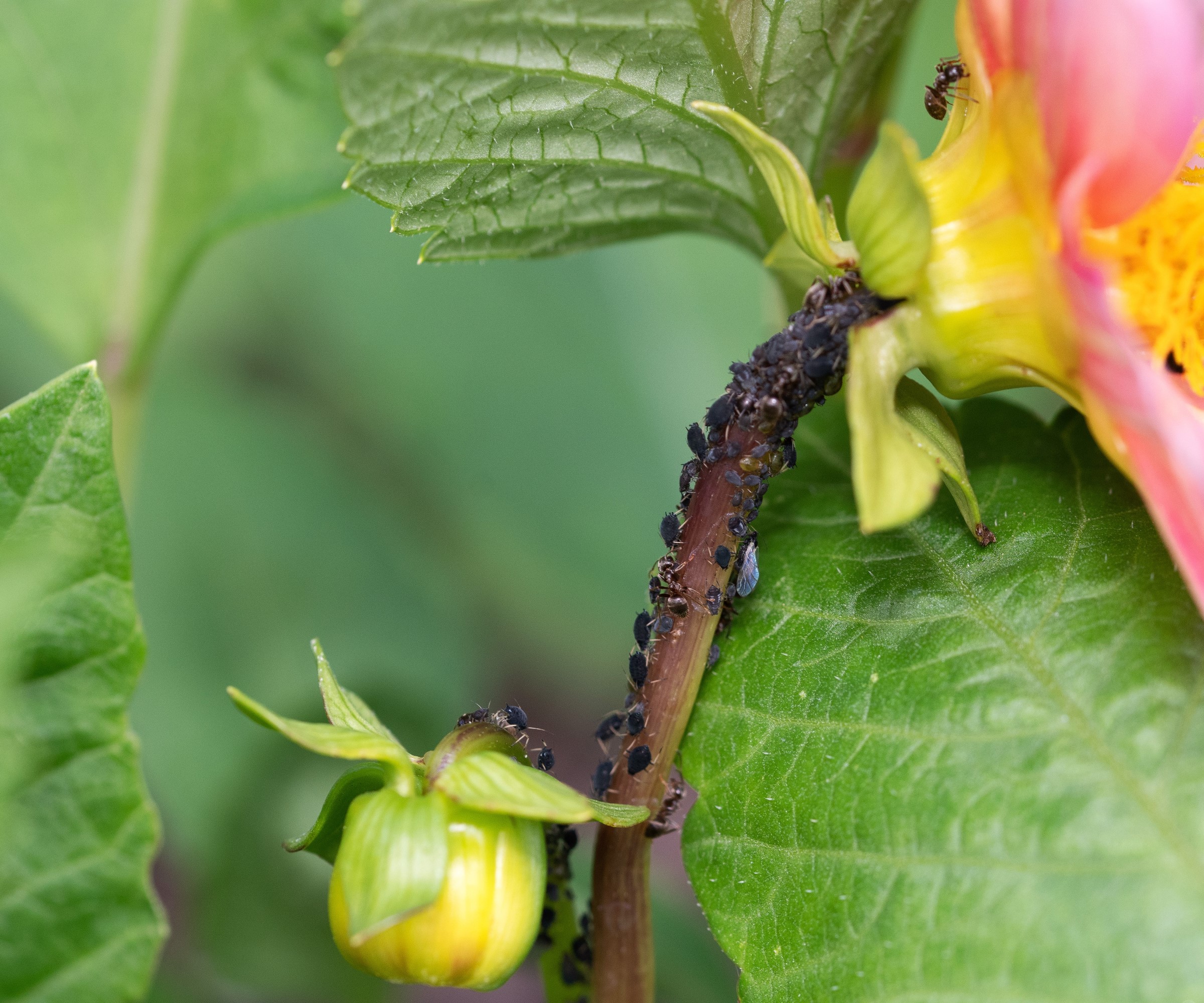
Aphids can be responsible for spreading mosaic virus from one dahlia to another
3. Powdery mildew
Powdery mildew is a common fungal issue that can hit a huge variety of plants, both edible and ornamental. It will show as white powdery spots on leaves and the stems and is often at its worst during hot and humid periods.
Good watering practices can prevent the spread. It is always best to water plants at the base and sprinkling water from above is a common garden watering mistake. Doing this can spread the spores that cause powdery mildew. Also water plants in the morning so the leaves dry during the day, as wet leaves left overnight are at risk of fungal problems.
You can get fungicides intended to use against powdery mildew, such as the Garden Safe Fungicide Spray available at Amazon.
John Negus advises that there are ‘several ways’ of avoiding powdery mildew. He says: ‘Don’t let plants dry out at the roots and grow them so there is plenty of air between them – space them out and reduce shelter from taller plants around them. Also, avoid water sitting on the leaves for too long.
‘If you spot infections early, remove the leaves to take away the source of infection, though don’t take too many as this may weaken the plant. You can take cuttings in spring so long as the new growth is not emerging through soil/compost that’s covered with the remains of this year’s foliage.’
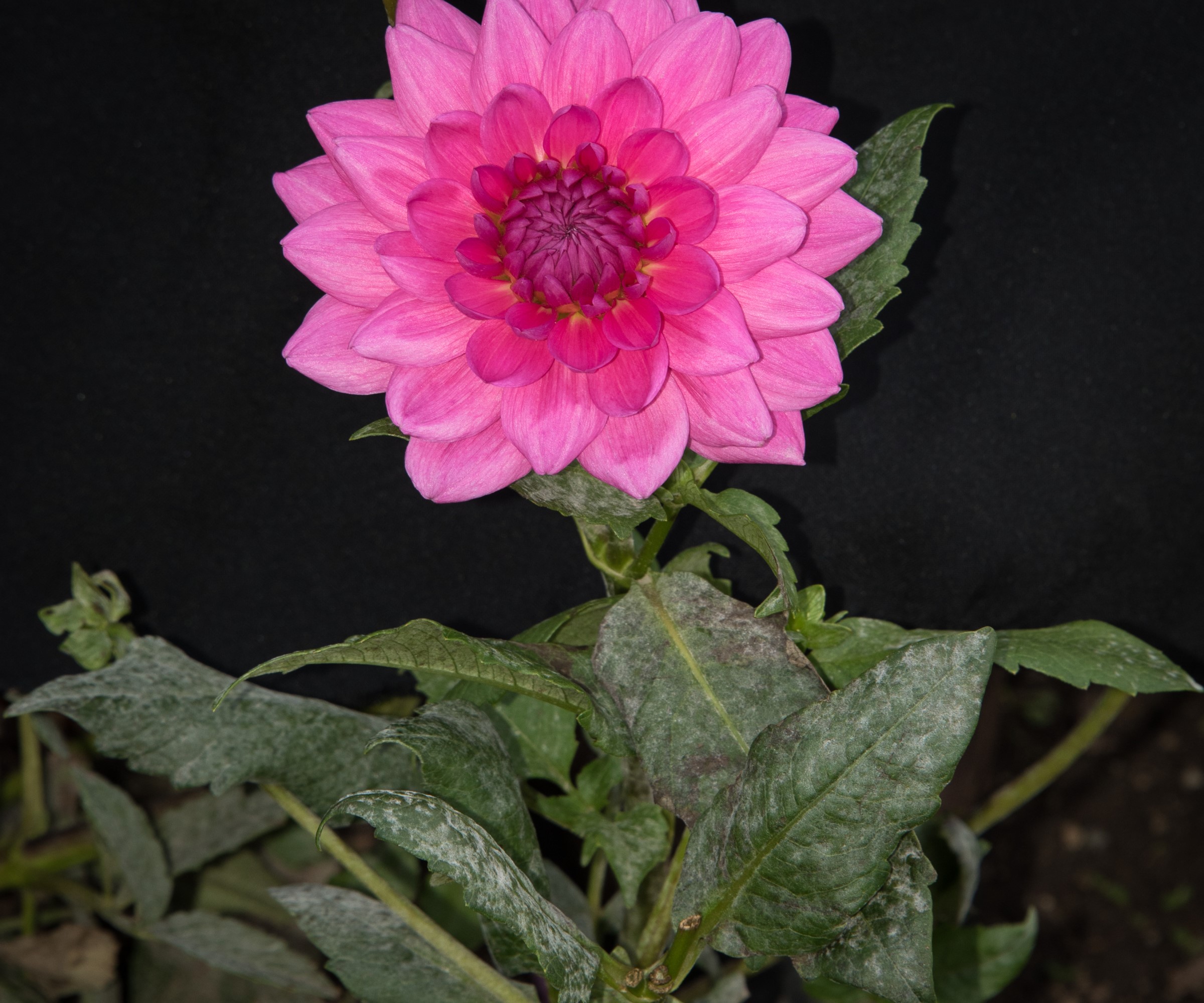
Leaves infected with powdery mildew should be removed
4. Smut
Dahlia smut is a fungal issue that causes irregular spots to appear on leaves, which turn into dark lesions. It is rife in cool and wet conditions and can be spread by rainfall or overhead irrigation. A serious infection of smut can distort plant growth and result in reduced overall vigor of the plant.
Keep a close eye on your plants and remove any affected parts right away and try to refrain from watering plants from overhead. Planting at the correct spacing to allow for good air circulation and better drying of moisture on leaves can help to curb the threat of smut and other fungal diseases. The disease can also overwinter in soil attached to the tubers when they are stored for winter.
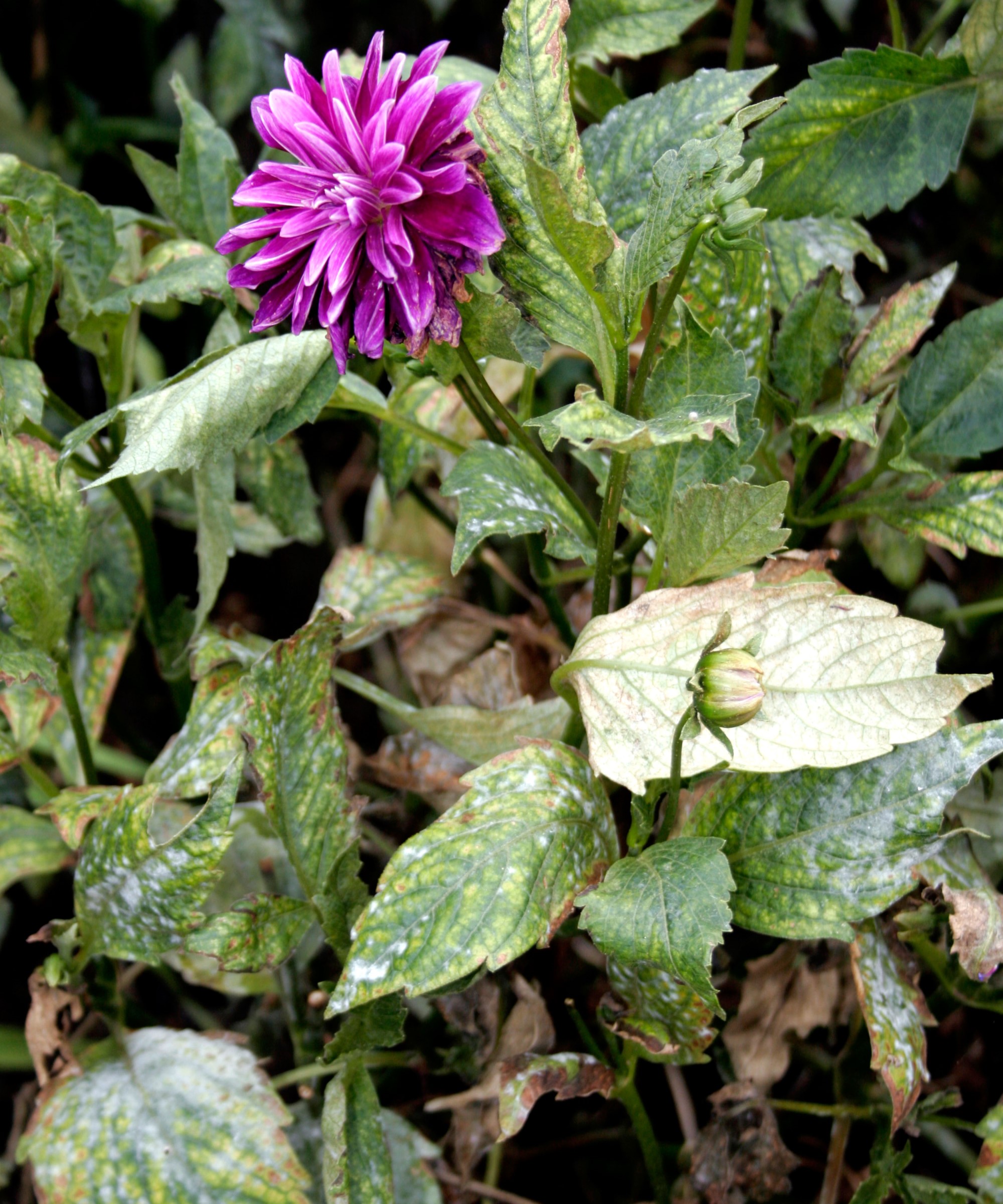
Dahlia smut can be spread by overhead watering
5. Wilt
Verticillium wilt and fusarium wilt are soil-borne fungal diseases that can affect dahlias at any stage of their lifespan. The results can be devastating as the plant dries up and wilts, often starting on one side of the dahlia. This can quickly spread, seemingly out of nowhere as they suddenly collapse, and can eventually kill the plant.
There is no chemical option for wilts and control can be tricky as the pathogens that cause it are in the soil. Crop rotation can help to prevent the build up of diseases spread in the soil, as is knowing your soil when planning a garden and making sure you do not plant dahlias in soil where wilt has been an issue.
Whether you are growing dahlias in pots or planning a cut flower garden that includes magnificent dahlia blooms, always do your research. Pick the right types, plant them at the right spacing, and learn how best to look after them. Not only will you get a bounty of great flowers, but the risks of diseases will have lessened as a result. Bad practices can attract diseases or leave plants stressed, which puts them at more risk of succumbing to dahlia pests and diseases.
Sign up to the Homes & Gardens newsletter
Design expertise in your inbox – from inspiring decorating ideas and beautiful celebrity homes to practical gardening advice and shopping round-ups.

Drew’s passion for gardening started with growing vegetables and salad in raised beds in a small urban terrace garden. He has worked as a professional gardener in historic gardens and specialises in growing vegetables, fruit, herbs, and cut flowers as a kitchen gardener. That passion for growing extends to being an allotmenteer, garden blogger, and producing how-to gardening guides for websites. Drew was shortlisted for the New Talent of the Year award at the 2023 Garden Media Guild Awards.
-
 I tried the baking soda trick to quickly and naturally clean my outdoor rug – it’s now set for Easter outdoor hosting
I tried the baking soda trick to quickly and naturally clean my outdoor rug – it’s now set for Easter outdoor hostingBaking soda is perfect for lifting dirt and debris
By Eve Smallman
-
 Drew Barrymore's striped sofa is her most elegant design to date – it oozes East Hampton elegance in time for summer 2025 (and is under $384)
Drew Barrymore's striped sofa is her most elegant design to date – it oozes East Hampton elegance in time for summer 2025 (and is under $384)This subtly striped linen sofa anchors any living room while feeling light and casual – it looks so much more expensive than its price tag
By Megan Slack